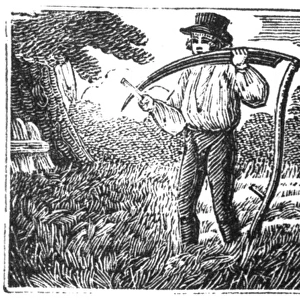Cafier d arabic, coffee plant
![]()

Wall Art and Photo Gifts from Mary Evans Picture Library
Cafier d arabic, coffee plant
Illustration from the Plate Collection of the Botany Library at the Natural History Museum, London
Mary Evans Picture Library makes available wonderful images created for people to enjoy over the centuries
Media ID 8617445
© Mary Evans Picture Library 2015 - https://copyrighthub.org/s0/hub1/creation/maryevans/MaryEvansPictureID/10706698
Arabica Asterid Bean Coffea Coffee Coffee Plant Commercial Eudicot Gentianales Product Rubiaceae Angiospermae Dicot Dicotyledon Magnoliophyta
EDITORS COMMENTS
This stunning botanical illustration showcases the Coffee arabica plant, a member of the Rubiaceae family and the primary source of Arabica coffee beans. The Coffee arabica plant is an angiosperm, a type of flowering plant that produces seeds enclosed in an ovary. As a eudicot, it belongs to the large clade of flowering plants characterized by having two embryonic seed leaves (cotyledons). The plant is depicted here in all its glory, with its elegant branches adorned with glossy, green leaves and clusters of fragrant, white flowers. The coffee cherries, which grow directly on the plant, are not visible in this illustration, but they are an essential part of the coffee production process. Each cherry contains two beans, which are carefully harvested, roasted, and ground to produce the beloved coffee beans. The Coffee arabica plant is native to Ethiopia and South Sudan and is now cultivated in various regions around the world, including Latin America, Africa, and Asia. It is the most commonly grown coffee species, accounting for approximately 60% of global coffee production. The plant thrives in high altitudes and requires specific climate conditions to flourish, making it a valuable and sought-after commodity. Botanical illustrations like this one have played a crucial role in documenting and understanding the natural world throughout history. They provide valuable insights into the morphology and anatomy of plants, helping scientists and horticulturists to identify, classify, and study various plant species. This particular illustration, from the Plate Collection of the Botany Library at the Natural History Museum in London, is a testament to the beauty and intricacy of the natural world and the importance of preserving and documenting it for future generations.
MADE IN THE USA
Safe Shipping with 30 Day Money Back Guarantee
FREE PERSONALISATION*
We are proud to offer a range of customisation features including Personalised Captions, Color Filters and Picture Zoom Tools
SECURE PAYMENTS
We happily accept a wide range of payment options so you can pay for the things you need in the way that is most convenient for you
* Options may vary by product and licensing agreement. Zoomed Pictures can be adjusted in the Cart.







